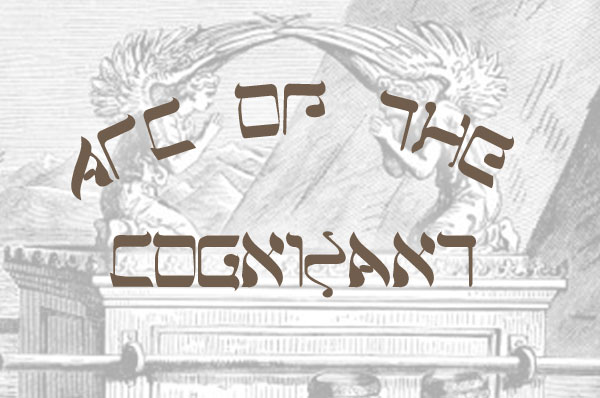My hypocrisy*: I take “lessons” from Medieval History
Inventing the idea of The Middle Ages
Anyone who has studied history at the post-secondary level will likely learn that the tradition of history-teaching in the West recognizes three large eras of history: the Ancient or Classical world, the Middle Ages, and the Modern Age. The centuries assigned to the three are; Classical from about 1000 BCE to 400 BCE, Medieval from 400 to 1450 CE, and Modern, 1450 to the present. A Middle Age was the best word historians writing in the 16th century could come up with, identifying the time between their own wonderful epoch of progress and the marvels of the Greek and Roman world deep in the past; they opined that medieval time was a fallen era, of decline after the greatness of the Greco-Roman civilization and the origins of Christianity.
The word “feudal” to describe the medieval system was invented in the 17th century. The idea of Dark Ages, from the Fall of Rome (410 CE, when Goths sacked the city) to the career of Charles the Great, who “saved civilization” by enlightened imperialism and conquest of pagans to the east and north, was an additional refinement to the idea of a Middle Age.
One Thousand Years of ‘Between’
On the face of it, it just seems flawed to lump 1,000 years together in one era, yet this easy convention has stuck with us. Worse, the use of the word “medieval” has become pejorative in common usage. Here’s an example: in the film Lions for Lambs, Tom Cruise plays a right-wing Senator who is eager for war in the Mid-East, against Iraq, Iran and Afghan insurgents. He tells the journalist, Meryl Streep, how much he loathes Al Qeda and its “medieval” standards. Another example: in Pulp Fiction, a muscular hitman threatens another man by saying, “I’m gonna get medieval on your ass.”
One gets the idea; “medieval” is backward, primitive, dark, brutal, ignorant and violent.
If we accept this simplistic vision of medieval times, then we can accept a simplistic idea of the “Medieval Mind” such as William Manchester writes about in A World Lit Only by Fire. A sampling of his generalities about the Middle Ages: medieval people “had no ego,” no sense of self; the world in the year 900 was not so different from the world in 1100; peasants went naked during the summers.
Such absurd statements! Assertions meant to apply to Europe’s entire continental society, across several centuries and many hundreds of miles of varied geography. No scholar of medieval history has endorsed any of Manchester’s ridiculously-confident statements trying to describe masses of people and hundreds of years under a single generalization. Unfortunately, the book is very popular and has sold very well.
The idea that there was such a thing as “the medieval consciousness” is still very powerful, and one often finds modern writers on consciousness making claims about the kinds of mind that medieval people had. Jeremy Rifkin, a popular writer on the evolution of culture and a futurist not afraid to predict vast social trends, has said our minds now are so much evolved beyond minds from 300 years ago, that the mind of a person in the year 1700 is much more like the mind of someone at the time of Jesus than like our own. We lucky people of the 21st century are evolving the “empathic civilization” that was simply unimaginable to earlier minds, he says.
Then there is the theory of human nature called “Spiral Dynamics” developed by Dr. Don Beck. Medieval people are in the Red and Blue phases of consciousness, the theory posits:
Red: Exploitative. Rough and harsh, rugged authoritarianism. Finds expression in slavery or virtual slavery, exploitation of unskilled labor. Generally run by a ‘Top Boss’ and series of proxies and deputies. Strict division of ‘have’s and have not’s’. Assumption is that people are lazy, must be forced to work. True leaders must suppress natural human tendencies. Motivated by “heroic” warrior ethic and conquest. Feudalist hierarchy. Blue: Authoritarian. Loyal to ‘Truth’, defined by social grouping. Purposeful, patriotic, demands obedience to Authority, creates guilt when not conforming to group norms. Motivation: to serve the greater good, through sacrifice of self to the collective.
Enough about errors of generalization on the Mind of medieval society. Despite some mistakes, can we agree there are patterns of social and cultural life in the medieval era?
Religion, Politics, and Social Order: the “organic” quality of medieval living
A respected founding intelligence of modern sociology, Emile Durkheim, believed that medieval society was more organic, more like a living organism, than modern society in the early 20th century. Industrial, capitalist, anti-religious, rationalist social order as exemplified by England or France in 1920, was atomistic. People were individualized by fragmentation. Each person was a social atom, seeking “rational self-interest,” in a society lacking the cohesion of the centuries when the Christian Church was an institution and a culture fusing all Europeans.
The social order of Europe was imagined in the mind of medieval people as a clear hierarchy, with the pope at the very peak of a pyramid of power, and descending from him, the “Holy Roman Emperor,” the kings, the dukes, the cardinals, archbishops and bishops of the material and spiritual halves of human existence. This hierarchy continued upward to the saints, angels and archangels all the way to God, and continued downward to the lowliest serf and slave in Christendom. Christendom was an organism. It was a body, and “in Christ” every Christian was part of this vast organism as each cell in one human combine to make a body.
Medieval society was different from modern, due to the unifying effects of One Church and a single religious culture on medieval people. Ecclesiastical culture was ubiquitous, as clergy were ubiquitous. The elements of worship were unitary, under one Church with one dogmatic belief system and one bureaucracy administering the tens of thousands of parishes and their revenues, at the command of the head of this network, the Pope.
The Church’s Pope was able, particularly in the 13th century, and most especially in Germany and Italy, to act as a supreme political power dominating kings and emperors. After the papal victory over the emperors was manifested in the fall of Frederick II’s heirs and the rise of French power in Italy (1270), the Papacy lost its next battle for political dominance with the King of France, Philip III. The 14th century would be a time of enfeeblement of the papacy.
Decline: the Waning Quality of late-medieval times
I would argue that it is reasonable to see the 14th century as a time of relative decline. Because the papacy had reached a zenith of power, and then entered a period of weakness when the popes lived, not in Rome but in Avignon within the French king’s dominion, for the Church the 14th century was a dismal one. It ended with three popes all claiming to be the only authentic Vicar of Christ; this was “the Great Schism,” a disaster for the collective consciousness of Christendom.
Not only did papal power wane, but the climate of Europe entered a phase of colder, longer winters, and this made its impact felt in crop yields and harvest failures, leading inexorably to famine and death of many by starvation. Europe had already lost colonial territory in the Holy Land in 1291, when Islam re-conquered all the Arab lands in the eastern Mediterranean; Europe lost another colony, Greenland – a Danish settler realm – during the 14th century, and all the colonists there died.
Four Horsemen of the Apocalypse: War, Famine, Plague, Death
Finally, enter the horrific epidemic of plague, the Black Death, a combined catastrophe of bubonic plague and anthrax responsible for killing one-third of Christendom’s population in the decade from 1345 to 1355. On top of mass death by disease, came several atrocious wars.
An Anglo-French contest begun by the English kings’ claim to the French throne, and fought entirely on French soil against invasions of English royal armies and horrible companies of mercenaries — without purpose beyond plunder and rapine — made life miserable in France. The Black Death, unfairly one would have to say, was most cruel to the people who were victims of the violence; warriors and hangers-on of the armies actually suffered fewer deaths by the plague than women, children, and non-combatant older people. The Hundred Years War (1337 to 1453 counted in actual years of invasions and battles) was not the only one raging in Europe; its violence had repercussions in Italy, Germany, and Scotland.
In Italy, “free companies” of violent men (condotierri) hired on contract by cities to attack their enemies, made large parts of that country miserable. Venice, Florence, Milan, Rome and Naples, the great powers of Italy, were seeking advantage by violence, with the papacy just one more empire-building despotism no better than the rest. In Germany, the emperors were not able to curb the power of great princes of Bavaria or Saxony or Bohemia; too feeble to enforce peace over the German realm, the emperor Charles IV submitted to the power of seven great princes who would henceforth have authority to elect an Emperor.
Spain was torn by war among competing Christian kingdoms and a few Muslim states. South-east Europe was being conquered piecemeal by the Turks. However, England was at peace inside its borders most of this century, with occasional battles against the Scots; Ireland was a land of war, as the Celtic lords revived their power against the English Crown, and Anglo-Norman earls fought one another for supremacy.
Peace was very much the exception, not the norm, in the 14th century. But war with hand weapons does not waste arable land for too long, unlike climate change. Medieval wars’ devastation was mitigated by rapid agrarian recovery.
Religious warfare also added to the record of war in Christendom; a heresy called Hussitism took root among the Czechs and motivated the Emperor to make a crusade against them, while the Roman and the Greek forms of Christianity still were hostile to one another in the face of the huge threat from Islam under the Turkish sultans. A smashing victory for the Turks over a crusading army in 1396 made it certain that Islam would seize Constantinople from the Greek Christian emperor – which happened in 1453.
Death, as pictured on a Tarot trump from the 14th century, was the great equalizer, laying low all ranks of society, from kings and bishops to maids and children. A popular artistic theme was the danse macabre, or dance of death. It is small wonder that this century appears as a sort of twilight after the glorious brightness of the preceding hundred years.
Twilight and Rebirth: is The Renaissance truly the origin of a better Europe?
This question I pose in conclusion is not answerable in a meaningful way, since one’s notion of a “better” Europe after the Middle Ages is not subject to proof. I can understand why people in the year 1400 might believe their times were cursed, as I understand people today feel our times are blighted by too many crises and problems without solutions. I cannot say whether human feelings of optimism and rebirth, or of pessimism and deterioration, are the more solidly-grounded in “reality.”
We can know this. The world did not decay permanently for Europeans after the “calamitous fourteenth century.” (The subtitle of Barbara Tuchman’s very popular, best-selling history of the 1300’s, A Distant Mirror.) The Hundred Years War ended, the Black Death passed – never to return as an epidemic of such vast dimension — the Great Schism in the papacy was healed, and Spain and Portugal sent ships to new lands after 1450 to begin the glorious rise of European civilization to global dominance.
Smallpox epidemics lay ahead in 1450. Religious wars and Inquisitions among Christians would be a blot upon Europe’s history from that year to the 1700’s, yet European civilization “advanced” through Renaissance, Protestant Reformation, and Scientific Revolution, to win its place of supremacy on the planet.
You and I, dear Canadian reader, are heirs of half a millennium of European and North American dominion over the globe. Our English language is virtually a planetary electronic common tongue, thanks to the power of British and American capitalism and military might. Our affluence as citizens of this nation-state is second to none, in material measures if not in spiritual ideals.
If now we feel shadows gathering over us, with climate change and damages to our physical environment and the extinction of thousands of other species due to our actions, we still have no idea what comes next. Embrace the mystery!
The twentieth century can easily compare with the fourteenth as a century of horrors. So, is the 21st century likely to see the dawning of a Renaissance? Not knowing the future, the only freedom one truly has is choosing among images of the future. Do you envision good, evil, or a mix of both, for our human world?
As we are finding out by present experience, it’s not pleasant to live with expectations of disasters and decline.
* Many times in this column I have inveighed against the notion that “History teaches Lessons” — and I still hold to that view. Historians teach. History is not a person and It does not undertake any human task such as teaching humans lessons from the past. You can learn from your own personal past experience. You may take conclusions from history — and that means trusting historians’ work is truthful; it is the historian who teaches, not History.
Charles Jeanes is a Nelson-based writer. The previous edition of Arc Of The Cognizant can be found here.

























